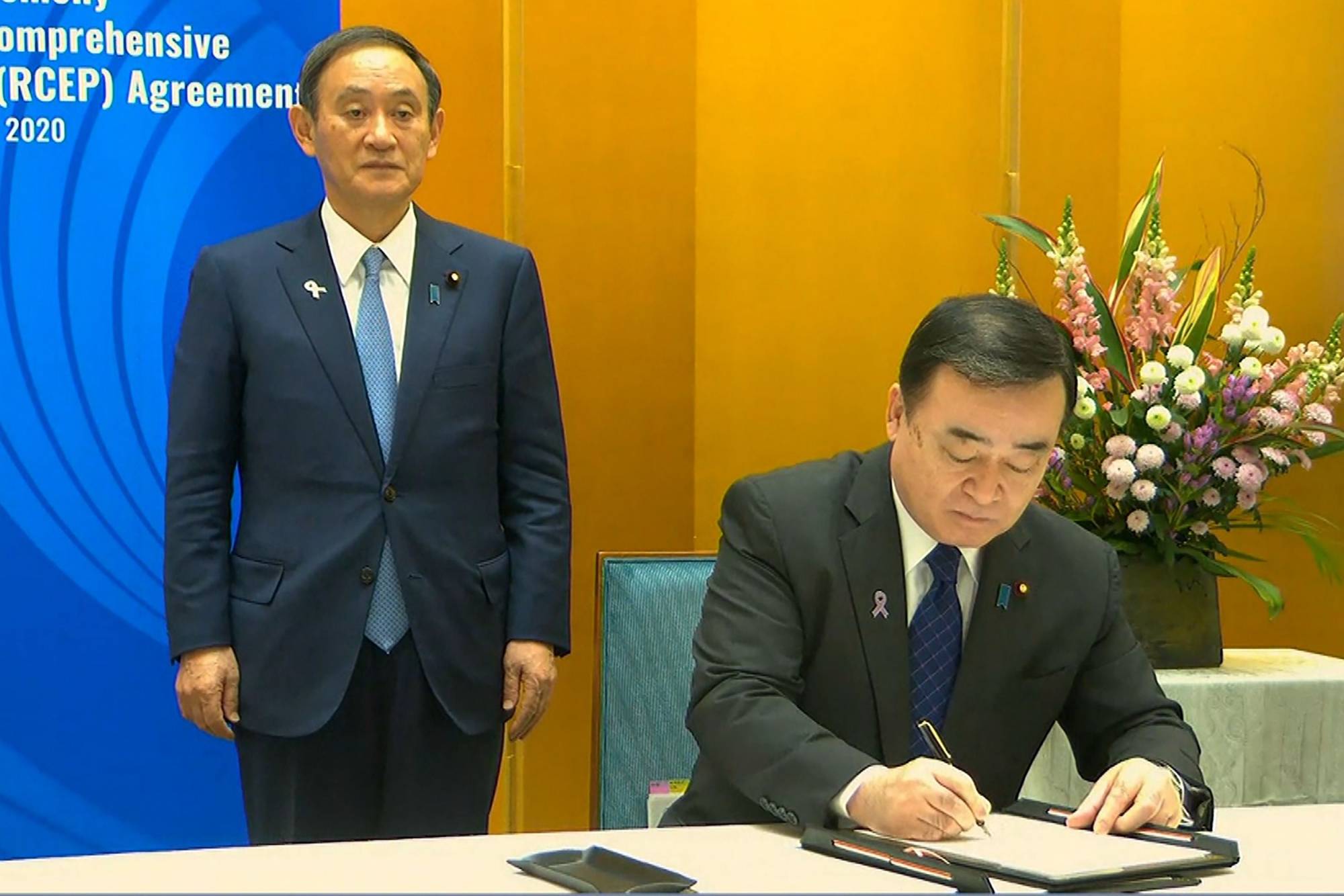The signing last Sunday of the RCEP, the Regional Comprehensive Economic Partnership, is a significant achievement. Eight years of negotiation yielded an agreement whose members account for 2.2 billion people and about 30% of the global economy. By those measures, it is the largest trade deal in history.
More significantly, the RCEP lays a foundation for future economic and political integration in Asia and it is doing so without the United States. Decisions by U.S. administrations to maintain distance from this trade pact and the Comprehensive and Progressive Agreement on Trans-Pacific Partnership (CPTPP) were a mistake — although they can be remedied. In the meantime, the U.S. absence obliges Japan to show leadership to direct both agreements toward integration, openness, good governance and the rule of law.
RCEP negotiations begin in 2012 and proceeded fitfully. Conclusion of the CPTPP, first as the Trans-Pacific Partnership and then in a revised form in 2018, spurred RCEP governments to wrap up their talks. Agreement might have been possible a year ago but India then decided to withdraw from the pact fearing it would unleash a flood of Chinese imports. After recognizing that this was not a negotiating tactic and Delhi would not return, the remaining 15 governments — 10 members of ASEAN (Brunei, Cambodia, Indonesia, Laos, Malaysia, Myanmar, the Philippines, Singapore, Thailand and Vietnam) and Japan, China, South Korea, Australia and New Zealand — finalized the deal.

















With your current subscription plan you can comment on stories. However, before writing your first comment, please create a display name in the Profile section of your subscriber account page.